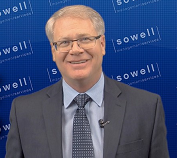Does The Jobs Report Change Anything?
The first Friday of a new month means one thing: The Jobs report. Viewed by many as the most important economic report of the month, the data on nonfarm payrolls and unemployment for August surprised to the downside.
The Labor Department reported that the economy created 156,000 new jobs last month, which was below the Reuters consensus for 180,000.
The unemployment rate, which had been expected to hold steady at 4.3%, instead rose a tenth of a percent to 4.4%.
The next important stat in this report is wage growth. The report indicated that workers' pay increased by 0.1%, which also missed expectations by a tenth. Over the past year, wage growth has increased at a rate of 2.5%, which is a solid number.
The report showed that the nation's private sector gained 165,000 jobs in August. This was below both the consensus estimates and the ADP report, which sported job growth of 237,000 last month.
As usual, there were revisions to the prior two months' job growth. July's total was cut by 20,000 from 209,000 from 189,000 while June was revised to 210,000 from 231,000. This means the current three-month average for job growth stands at 185,000.
It is important to note that August payroll numbers have tended to be volatile due to seasonal distortions. CNBC reports that August numbers often come in weak at the first reading only to be revised higher down the road. For example, in 2011, the initial reading for job growth came in at zero, but was later revised to 104,000. In 2016, the first report showed 151,000, while the final number was 176,000. Thus, we probably shouldn't get too worked up about the so-called "misses" in today's report.
Analysts have been watching the economic data more closely of late due to the belief that the economy could be accelerating. This week's GDP report, which showed the economy growing at a rate of 3% versus the consensus for a rate of 2.7% is Exhibit A here.
From my seat, today's jobs report doesn't negatively impact this theme. Nor does the report change the view of what Janet Yellen's bunch is expected to do next (i.e. begin reducing the Fed's balance sheet at this month's meeting and then continue returning rates toward "normal" levels later in the year). And it is for this reason that stock futures are little changed after the report and pointing to a higher open on Wall Street.
I will also opine that the view the economy is "doing just fine, thank you," is also behind the stock market's recent rebound. But with the major indices having moved largely sideways since summer began and the top end of the range fast approaching, it will be interesting to see if the bulls have enough firepower to break out to new highs.
Enjoy the Labor Day weekend!
Thought For The Day:
It is the mark of an educated mind to be able to entertain a thought without accepting it. -Aristotle
Current Market Drivers
We strive to identify the driving forces behind the market action on a daily basis. The thinking is that if we can understand why stocks are doing what they are doing on a short-term basis; we are not likely to be surprised/blind-sided by a big move. Listed below are what we believe to be the driving forces of the current market (Listed in order of importance).
1. The State of the Tax Reform
2. The State of the Economic/Earnings Growth (Fast enough to justify valuations?)
3. The State of Geopolitics
4. The State of Fed Policy
Wishing you green screens and all the best for a great day,

David D. Moenning
Chief Investment Officer
Sowell Management Services
Disclosure: At the time of publication, Mr. Moenning and/or Sowell Management Services held long positions in the following securities mentioned: none. Note that positions may change at any time.
Disclosures
The opinions and forecasts expressed herein are those of Mr. David Moenning and may not actually come to pass. Mr. Moenning's opinions and viewpoints regarding the future of the markets should not be construed as recommendations. The analysis and information in this report is for informational purposes only. No part of the material presented in this report is intended as an investment recommendation or investment advice. Neither the information nor any opinion expressed constitutes a solicitation to purchase or sell securities or any investment program.
Any investment decisions must in all cases be made by the reader or by his or her investment adviser. Do NOT ever purchase any security without doing sufficient research. There is no guarantee that the investment objectives outlined will actually come to pass. All opinions expressed herein are subject to change without notice. Neither the editor, employees, nor any of their affiliates shall have any liability for any loss sustained by anyone who has relied on the information provided.
The analysis provided is based on both technical and fundamental research and is provided "as is" without warranty of any kind, either expressed or implied. Although the information contained is derived from sources which are believed to be reliable, they cannot be guaranteed.
David D. Moenning is an investment adviser representative of Sowell Management Services, a registered investment advisor. For a complete description of investment risks, fees and services, review the firm brochure (ADV Part 2) which is available by contacting Sowell. Sowell is not registered as a broker-dealer.
Employees and affiliates of Sowell may at times have positions in the securities referred to and may make purchases or sales of these securities while publications are in circulation. Positions may change at any time.
Investments in equities carry an inherent element of risk including the potential for significant loss of principal. Past performance is not an indication of future results.
Advisory services are offered through Sowell Management Services.
